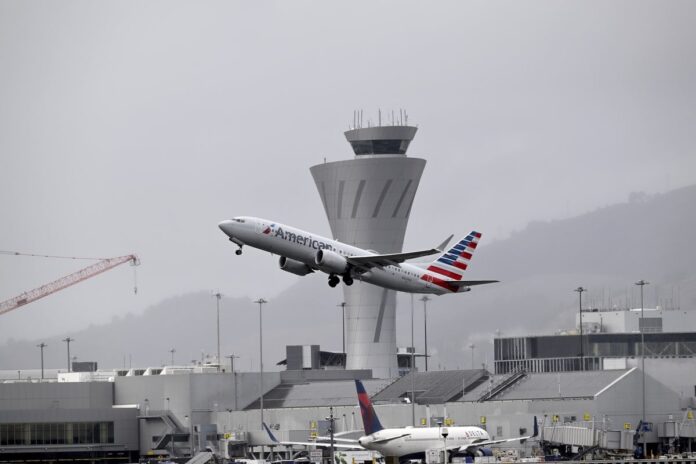The Federal Aviation Administration plans to reduce flights by 10 percent across 40 major U.S. airports in response to the ongoing U.S. government shutdown. Hundreds of flights were canceled for Friday, the first day the policy takes effect (with a 4 percent reduction that will rise to 10 percent by next Friday).
The move aims to alleviate strain on short-staffed air-traffic controllers, said FAA Administrator Bryan Bedford at a news conference on Wednesday. Controllers have been working without pay while the federal government has been closed, which has disrupted flights.
“We had to have a gut check of ‘What is our job?’” said Secretary of Transportation Sean Duffy at the event. “Is it ‘make sure there’s minimal delays or minimal cancellations,’ or is our job to make sure we make the hard decisions to keep the airspace safe?”
On supporting science journalism
If you’re enjoying this article, consider supporting our award-winning journalism by subscribing. By purchasing a subscription you are helping to ensure the future of impactful stories about the discoveries and ideas shaping our world today.
To find out how this transition will play out and what is at stake, Scientific American spoke with Michael McCormick, an associate professor at Embry‑Riddle Aeronautical University, program coordinator of its Air Traffic Management program and a former air-traffic controller.
[An edited transcript of the interview follows.]
Was the FAA decision surprising?
I’m not surprised. This is actually a strategy that they’ve been employing in the New York metropolitan market since before the summer of 2024. [The government] went to the airlines, and they said, “We need you to reduce your flights by 10 percent.”
And the airlines were able to do that. One of tactics they employed was: they “upgauged” their aircraft. That’s the industry term for flying bigger airplanes.
So, by making more seats available on the routes into those airports, they were actually able to come close to, or meet, what their passenger throughput was prior to the reduction.
This also happened as a result of January’s Ronald Reagan Washington National Airport collision, a deadly crash of a helicopter and a commercial airliner, right?
The FAA reduced the number of flights that could fly into Washington National on an hourly basis. This is a tried-and-true strategy for how to mitigate the impact, either from staffing or excess demand, into major airports.
Have we tried this on a national scale before?
Now the scope and scale of it is much bigger than what they have previously employed. As long as they transition to it at a reasonable rate, and that’s what it appears they’re doing, it should be manageable for airlines to work with their schedulers.
How will they decide which flights to cut?
They will take a look at which flights have the lowest number of passengers, in terms of percentage of available seats, [a measurement] known as “load factor.” And those will be the first flights [for which] they will [ask], “Is it possible to move those passengers to other flights—especially if we upgauge aircraft on those other flights?”
Additionally, the airlines will look at their major hubs to see which of these flights we can move to other hubs, ones that aren’t being impacted, or make direct flights rather than connections.
Are there other benefits to this reduction?
Another advantage, besides keeping the level of safety where it needs to be by reducing the number of flights, is: it creates predictability for the airlines. This is something that has been absent since the government shutdown started because you don’t know if you’re going to be short-staffed until you’re short-staffed.
Controllers aren’t going to management and saying, “I’m not going to be here two weeks from Tuesday.” It’s just that some of them aren’t at work today. So that means that both the FAA and airlines have to react to those staffing shortfalls rather than planning for them. So airlines can now plan for this, which means that they can better communicate with their passengers. They can also better plan their system operation for where aircraft and air crews need to be in order to meet the new schedules.
The downside to [the strategy] is: you’re going to be canceling flights where they don’t need to be canceled—because staffing levels may be 100 percent at LAX [Los Angeles International Airport] tomorrow, but it’s going to [mean] reducing flights [by] about 4 percent regardless.
What is the stress on air-traffic controllers like right now? That must be very real.
Oh, absolutely. The air-traffic system was in crisis prior to the government shutdown. [The FAA was] short more than 3,000 controllers across the U.S. Many controllers were working long hours overtime, [with] 60-hour workweeks. Since the shutdown, it’s only exacerbated that.
And then you add to it the personal stressors of the uncertainty of when you’re going to get paid. How are you going to manage that financially for yourself and for your family?
That causes a lot of anxiety to the controllers who have to report to work. That’s the last thing they need. They already have all the stressors on the job, the cognitive workload, the time pressures in making thousands of decisions, and it may be on overtime. You’ve already been working that week, so it could be throwing off your sleep schedule. And it leads to cumulative fatigue.
With the culture of air-traffic control, you’re used to being in charge. And now you have lost control of a major aspect of your life.
How far can all this be pushed?
We’re in a brand-new world right now. We’ve already exceeded what the last shutdown was like. That means every week, every day is going to be more and more impactful to these controllers—and with no end in sight.
What is the most important point to make with the public about this decision?
One of the things that I would focus on is safety, which remains the FAA’s number one priority, in air-traffic control. By dialing back the system, it ensures that safety remains the priority.
Efficiency may hurt, but safety will not.
And if these people ever see safety is being compromised by what’s going on, will they speak out?
Oh, absolutely. You can always count on the controller workforce to do that. They live and breathe safety every day. And if they see something that’s unsafe, they say something about it.
I have to get on an airplane tomorrow, so that’s why I’m asking.
Yeah, I have no problems flying. I would get on an airplane tomorrow.



